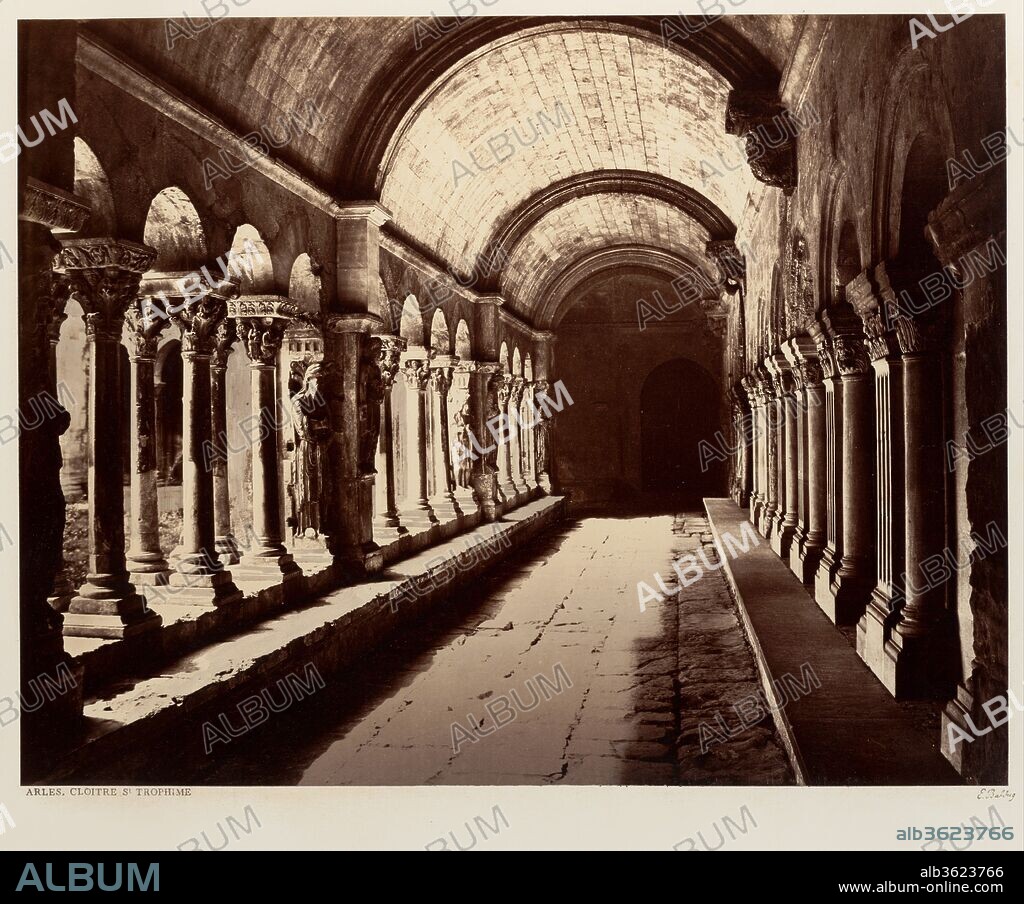alb3623766
EDOUARD BALDUS. Arles, Cloitre St. Trophime

|
Ajouter à une autre Lightbox |
|
Ajouter à une autre Lightbox |



Avez-vous déjà un compte? S'identifier
Vous n'avez pas de compte ? S'inscrire
Acheter cette image

Auteur:
Titre:
Arles, Cloitre St. Trophime
Légende:
Voir la traduction automatique
Arles, Cloitre St. Trophime. Artist: Édouard Baldus (French, born Prussia, 1813-1889). Dimensions: Image: 33.2 x 42.5 cm (13 1/16 x 16 3/4 in.)
Mount: 46 x 60.5 cm (18 1/8 x 23 13/16 in.). Date: ca. 1861.
The twelfth-century cloister of the Church of Saint-Trophîme in Arles, noted for its richly carved capitals, ranks among the most important examples of French medieval architecture, and was among the sites that Baldus first photographed on his 1851 "mission héliographique." In the context of the "Paris-Lyon-Méditerranée" album, this picture's tunneling perspective and the repetition of arches link the famous cloister to the achievements of Second Empire engineers--to the railroad tunnels and arched viaducts that are presented in a similar fashion elsewhere in the volume.
Proper exposure of a scene that included both shadowed interior and sunlit exterior presented a difficult task. Careful scrutiny of the print reveals that Baldus used thin tissue overlays on the most transparent sections of the glass negative so as not to lose all detail in the darkest parts of the print. In addition, light washes of watercolor or ink were used to give tone to some of the lightest areas and to define the cloister colonnade.
Technique/matériel:
Albumen silver print from glass negative
Musée:
Metropolitan Museum of Art, New York, USA
Crédit:
Album / Metropolitan Museum of Art, NY
Autorisations:
Modèle: Non - Propriété: Non
Questions sur les droits?
Questions sur les droits?
Taille de l'image:
3993 x 3320 px | 37.9 MB
Taille d'impression:
33.8 x 28.1 cm | 13.3 x 11.1 in (300 dpi)
Mots clés:
 Pinterest
Pinterest Twitter
Twitter Facebook
Facebook Copier le lien
Copier le lien Email
Email
